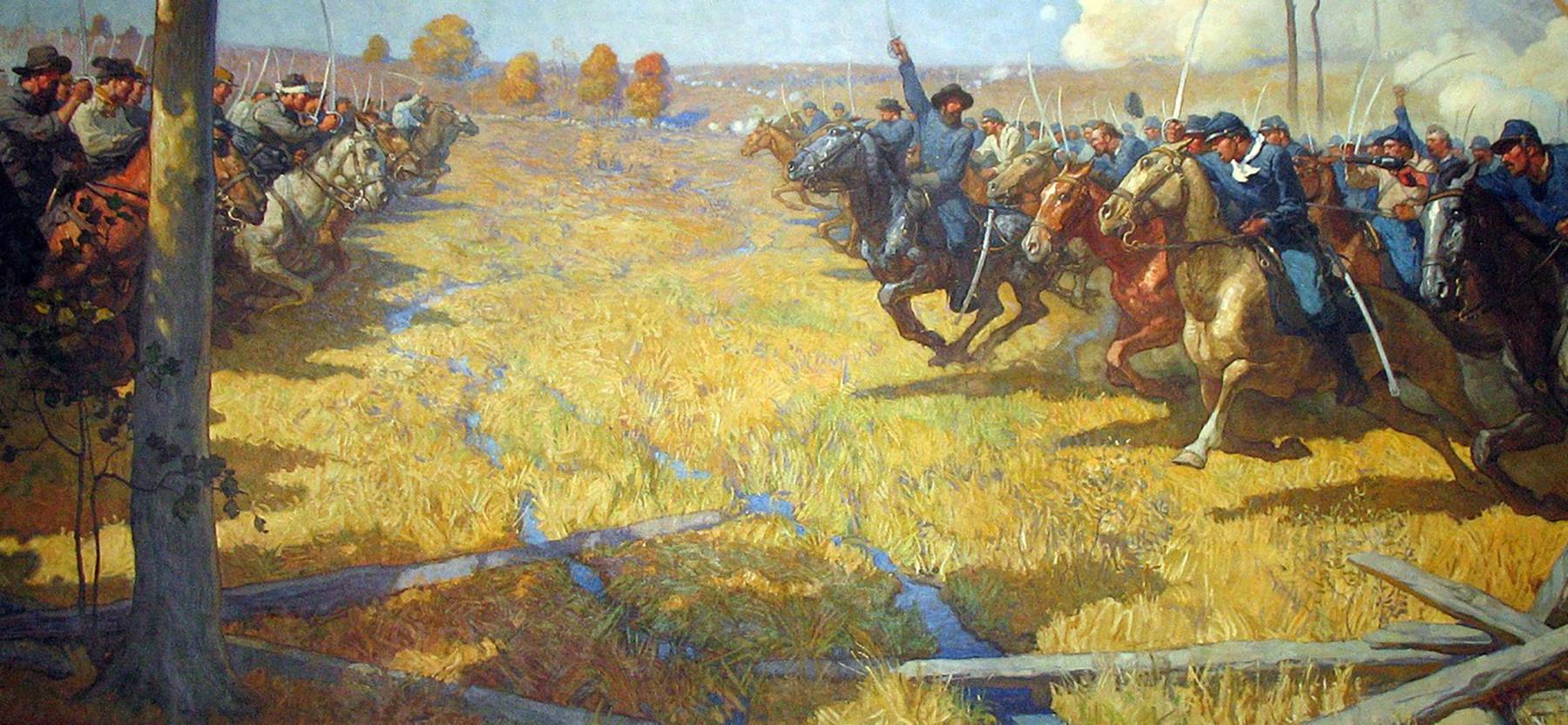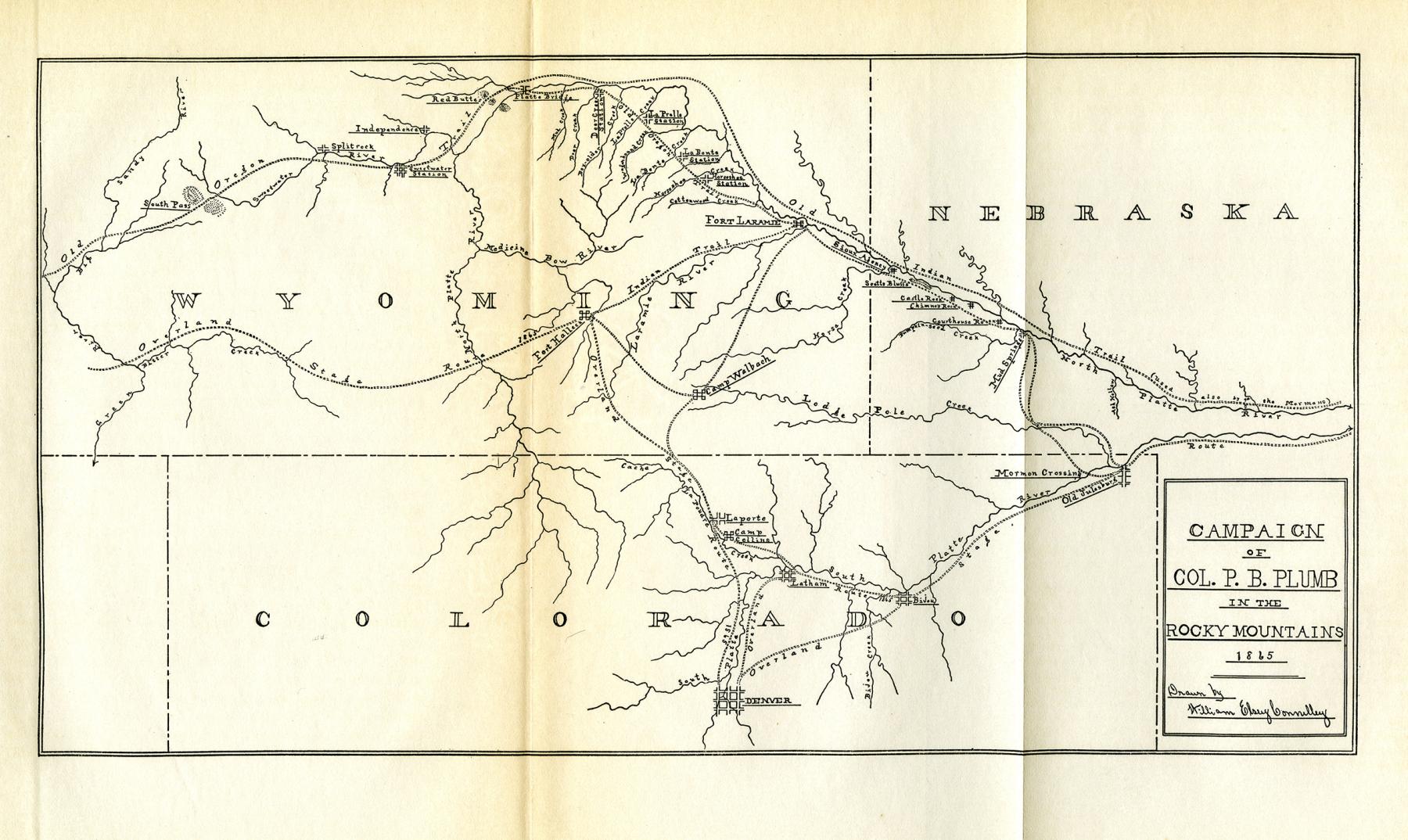- Home
- Encyclopedia
- The 11th Kansas Cavalry—in Kansas and The West
The 11th Kansas Cavalry—in Kansas and the West
For Kansans, the Civil War began years before 1861, when the first official shots were fired on Fort Sumter. Kansas Territory plunged into conflict seven years earlier, with the passage in 1854 of the Kansas-Nebraska Act. Under the act, a politically paralyzed Congress left up to the popular vote of the residents whether the state would be admitted as a slave state or a free state. This triggered an influx of Free-State abolitionists into the territory, creating tension and violence with the neighboring slave state of Missouri.
The era, known as Bleeding Kansas, affected every resident. Supplies of food and other goods were disrupted, homes and businesses were burned and people were murdered. For Kansans and Kansas soldiers, the Civil War was intensely personal, a conflict that would finally settle the slavery question and put an end to the bloodshed.
And afterward, the soldiers’ story continued in the West.
Forming the regiment
Kansas became a state January 29, 1861; the Civil War began on April 12. Kansas immediately jumped into the fray and over the course of the war more than two thirds of the state’s male population of age enlisted in the Union army. Of those roughly 35,000 men, 8,500 men were killed or wounded—nearly 25 percent—giving Kansas the honor of suffering more Civil War casualties per capita than any other state in the Union.
Image
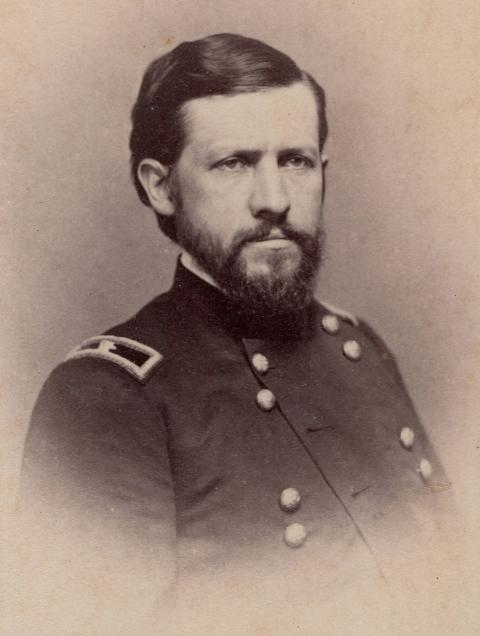
The 11th Kansas was very much part of the fervor to preserve the Union and stamp out slavery. Originally an infantry regiment, the regiment was formed in August 1862. It was led and partially recruited by Thomas Ewing, Jr. who was a judge for the Kansas State Supreme Court and a former Free-State abolitionist. Ewing’s family was from Ohio, where his parents had taken in a young neighbor boy named William Tecumseh Sherman and raised him as their own after the death of his father in 1829.
Image
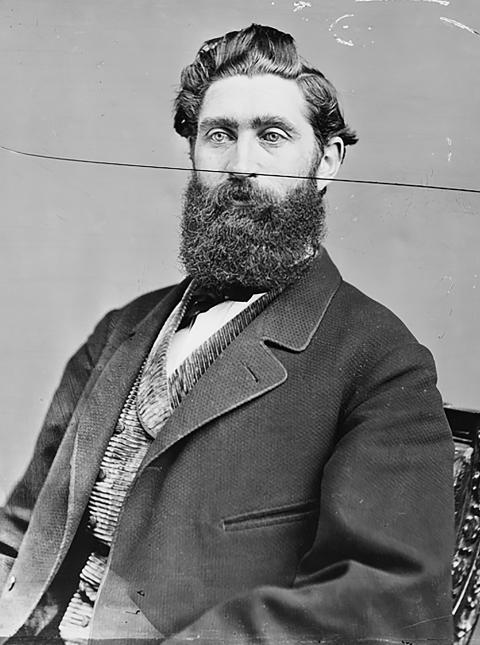
Once the regiment was recruited, officers were elected by the men. Col. Thomas Ewing Jr. took command in early September 1862, with Lt. Col. Thomas Moonlight and Maj. Preston B. Plumb among his officers. As a state unit, the regiment was outfitted by the state of Kansas and issued large, antiquated .72 caliber Prussian muskets from the 1830s. Heavier than the newer Springfield and Enfield muskets, the Prussian Potsdam muskets made up for that disadvantage by firing a “buck & ball” load consisting of one large-caliber musket ball and three smaller buckshot rounds. This gave the weapon the scattershot effect of a shotgun at close range. When combined with the musket ball the results could have devastating effects. This became a bit of a joke among Ewing’s men, who remarked that they should have the regiment reclassified as light artillery. A reporter who interviewed Plumb commented, “When the 11th went out for target practice people moved over into the next county.”
Image
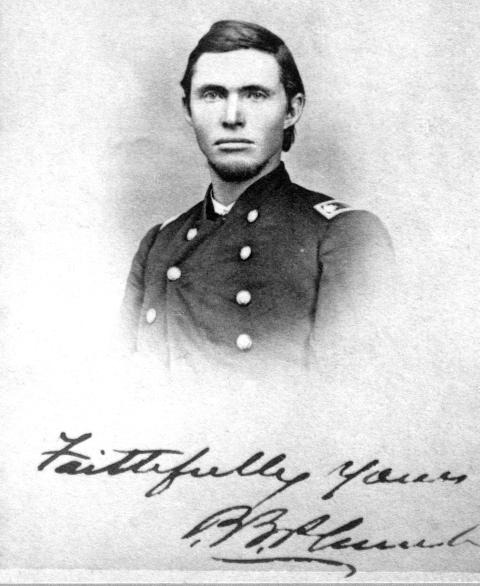
Early fights, and a newspaper
The regiment’s first major engagement was the Battle of Prairie Grove on December 7, 1862. The battle involved a combined force of approximately 20,000 men, and while tactically indecisive, it allowed the Union army to retain control of northwest Arkansas. Eleventh Kansas Lt. George Walker wrote,
“We had marched all night much of time in timber, had passed Maysville Ind. Ter. [Indian Territory] and were out in the open high prairie, two batteries of artillery and some cavalry had passed us since daylight. We heard firing in front of us and the order ‘Double quick’ was given and we started forward on the run with Capt. Heritage in lead of our company. I said ‘on the run’ we were as near a run as weary men who had marched all night carrying heavy muskets and forty rounds of .69 caliber ammunition could run. While thus making best of speed we could.”
Image
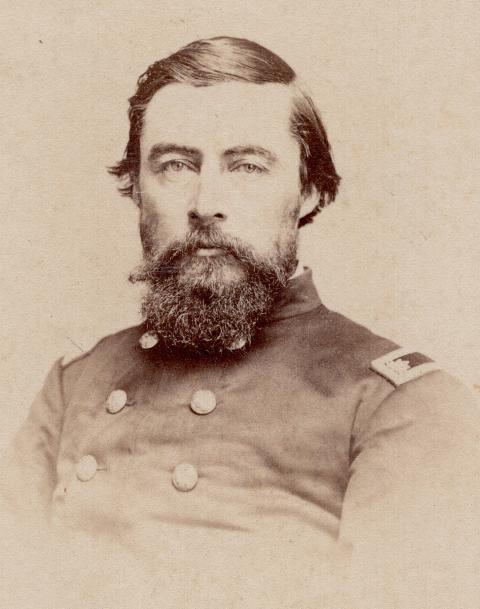
This battle gave the regiment its first taste of combat. It also interrupted the printing of their first (and only) regimental newspaper. Several of the men of the regiment were newspaper men--among them Lt. Col. Plumb and Capt. Edmund Ross, who later would represent Kansas in the U.S. Senate and cast the deciding vote acquitting President Andrew Johnson after he’d been impeached.
The men had come across a broken printing press in Cane Hill, Arkansas just prior to the battle. They repaired it and began printing the first side of a single-sheet newspaper, the Buck & Ball, when the fighting broke out on December 7. A few days later, the printed sheets were recovered, the printing was put back together, and the remainder of the newspaper was printed. Unfortunately, only one issue was ever made, as Gen. Schofield was concerned that potentially valuable military information could fall into enemy hands.
A cavalry regiment
In the spring of 1863, Col. Ewing was promoted to brigadier general, and Thomas Moonlight was promoted colonel of the regiment. Also, at that time the 11th Kansas was converted to a cavalry regiment. This involved the issuance of horses and carbines to replace the unwieldy muskets.
But it was not a streamlined process: Some companies had horses and no carbines, and others had carbines and no horses. By late summer of 1863 the transition was complete, and the 11th Kansas Cavalry was broken up and stationed along the Kansas-Missouri border to deal with the growing threat of border ruffians—essentially Confederate guerrillas unofficially tied to the Confederate army. Many of these men were proslavery and anti-Free-Staters who had been fighting the abolitionists in Kansas since the 1850s. Now supplied by the Confederate army, they were wreaking havoc on Union forces in the area.
A bitter border war
The most famous of these bushwhackers was William Clarke Quantrill, who with his band had sacked the town of Lawrence, Kansas in 1856. Quantrill returned to the town on August 21, 1863 and sacked it again, killing nearly 200 men and boys and ransacking and burning homes and businesses.
Plumb was in command of the area but was forty miles away at Kansas City. He immediately started a pursuit, but, plagued by bad information and misdirection, he crisscrossed the area looking for Quantrill’s band of roughly 500 men. Plumb took a detachment and sent word to Ewing and other stations along the border to intercept Quantrill. In the end, the pursuit was unsuccessful and being a hot August night, both horses and men collapsed from the 24-hour continuous pursuit.
The Lawrence Massacre, as it came to be known, fueled resentment between the Kansans and bushwhackers. The guerillas showed no mercy and took no prisoners, and the Union troops did the same. That is, the 11th Kansas fought brutal guerilla warfare in Missouri and along the Kansas-Missouri border. Not only did the regiment have to deal with bushwhackers, but they also had to contend with the private citizens of Missouri, many of whom served as spies and saboteurs for the guerillas, and harbored enemy soldiers. George Plumb, brother of Maj. Preston Plumb, told the following story:
“I was at one time with Captain Green and got after some guerillas. There were three or four companies of us and a lot of rebels. One of them had gone into a house, - some of the boys had seen him, so they went up and asked the woman if there was a soldier there; she said no and they could search the house. They looked but did not find him; later saw him outside; had changed his uniform for a butternut suit. Captain Green had two big pistols and followed the man down the path firing and calling after him to halt but he got away. A woman came out of the house and started over the stile she had the man’s soldier clothes concealed under her dress, but they dropped out as she went over the stile.”
Private Sherman Bodwell described a deadly bushwhacker encounter in his diary:
“Thursday Oct. 1st/63
Marched early, halted for breakfast, when command divided. Maj. Plumb taking his com. (“B” & “H”) and moving toward Napoleon [Missouri]. About 10 the Maj. Lt. and the advance came suddenly on two guerillas mounted. One dismounted and took the brush, but the Maj. [Plumb] brought him [down] with his holster pistol. I rode up. Lt. stood over him, his pockets having been searched and papers taken. Among them a discharge from the rebel service signed by Captain, Gen. Rains, and Gen. Price. He was talking, claiming to be a prisoner, etc., Lt. asked Maj. [Plumb] are you through with him? Maj. [Plumb] nodded assent. Lt. said to men standing about “mount your horses” and as they drew off, aimed and fired the revolver ball striking just back of the eye, and he was with his judge, with all his imperfections on his head. Lt. stood between us, so I did not see his face. [Sgt. Amos] Custard says he instinctively raised his hand to shield himself and ‘an ashy paleness overspread his face as when a cloud passes over the sun.’”
The regiment continued in this form of service throughout 1864, with the exception of its involvement in the Battle of Westport, Oct. 23, 1864, in present-day Kansas City. Again, the regiment met a large Confederate force in a battle that came to be known as the “Gettysburg of the West” due to the large number of soldiers involved—more than 30,000 men.
The 11th Kansas was tasked with checking a Confederate advance from Missouri into the Kansas. The regiment was split during the battle but was successful in repelling Confederate forces through tough fighting, including an uphill dismounted cavalry charge. Around the time of the Battle of Westport and immediately following it, the regiment took on ten African American undercooks.
Marching west
By 1865, the war was drawing to a close, and a more pressing need for the 11th Kansas was felt out west. The regiment was ordered to Dakota Territory—there was as yet no Wyoming Territory—to protect the overland North Platte-Sweetwater route and the telegraph line that ran along it. For the men of the regiment, the order was not a welcome one. They had enlisted to preserve the Union and to settle the Bleeding Kansas conflict, not to fight Native Americans out west. Still, despite their misgivings, the regiment (aside from companies C, E, and G) dutifully began the trek west from Kansas in February 1865.
The journey from Kansas to Fort Kearney in Nebraska Territory and to Fort Laramie and eventually Platte Bridge Station at what’s now Casper, Wyoming, was an arduous one. They braved heavy snow, freezing cold, and strong winds nearly their entire trip. They arrived at Fort Laramie April 9—the same day Lee surrendered to Grant at Appomattox. Col. Moonlight remained at Fort Laramie, while Lt. Col. Plumb traveled to Platte Bridge Station.
War along the trails
Image
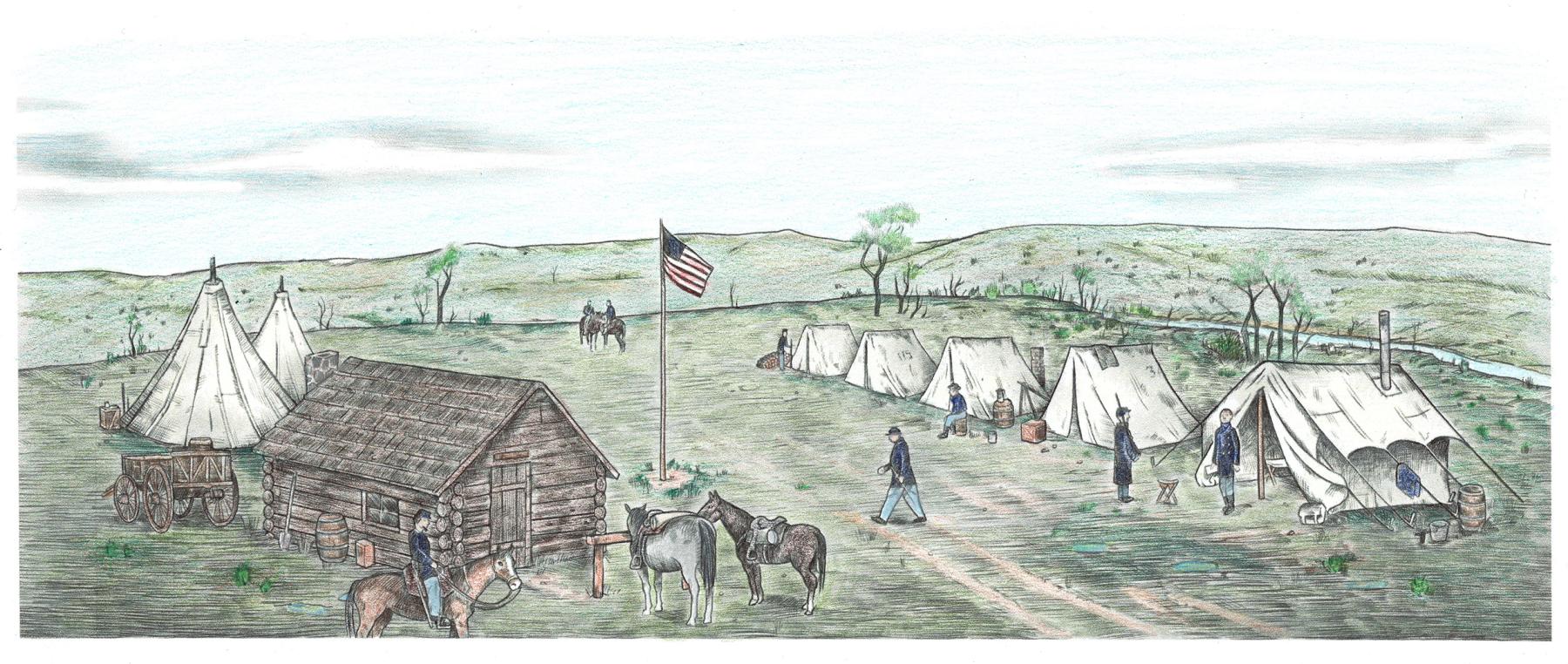
Instead of garrisoning the men at the fort Plumb chose to create Camp Dodge on higher ground roughly six miles away at the base of Casper Mountain. It was largely a tent camp, but included three buildings, one of which was regimental headquarters. The layout was somewhat unusual in that it was in a V-shape along the banks of Garden Creek giving the regiment clear visibility in multiple directions from the high ground.
Col. Moonlight was appointed commander of the north sub district of the Great Plains, and as such, the 11th Kansas Cavalry had command of the district (See map). The 11th Ohio Volunteer Cavalry had been stationed at Platte Bridge Station since October 1863 and served along the telegraph route. But the regiment had recently mustered out four of its 11 companies of men, resulting in the need for the 11th Kansas to fill in behind the departing Ohioans.
The two regiments thus had to work together as if they were a combined unit. With Col. Moonlight in command of the district, Lt. Col. Plumb distributed his 11th Kansas troops along the telegraph route, intermingling them with troops of the 11th Ohio. Plumb was responsible for issuing supplies and ammunition, as well as for all reports to Moonlight.
The garrison of each substation would at times be made up of both 11th Ohio and 11th Kansas soldiers, and detachments were sometimes sent out with an officer of one regiment in command of soldiers of the other. This command structure was very similar to the one followed by the 11th Kansas while fighting bushwhackers in Missouri. Plumb, for example, had led soldiers of his own regiment as well as members of the 11th Missouri and militia units.
Col. Moonlight embraced his new role with zeal. On May 3, 1865, he set out on an expedition with 500 cavalry soldiers against the tribes in retaliation for attacks on telegraph stations. The large detachment consisted of troopers of the 11th Kansas Cavalry, 11th Ohio Cavalry and 7th Iowa Cavalry, guided by famed mountain man Jim Bridger.
Moonlight mistook a herd of antelope for a band of Cheyenne, water was in short supply and the men began to threaten mutiny against him. He unofficially relinquished command to Plumb, who immediately brought the detachment back to their original stations. Moonlight returned to Fort Laramie in disgrace.
Later that month, on May 15th a small band of Oglala Lakota Sioux was located about 10 miles from Fort Laramie. With them they had Mrs. Lucinda Ewbanks and her small daughter. Mrs. Ewbanks had been kidnapped in Nebraska nine months earlier by a band of Cheyenne.
Moonlight had six of the Oglalas arrested, including Two Face and Black Foot. Two Face claimed that he had purchased Mrs. Ewbanks from the Cheyennes in a “gesture of friendliness;” Mrs. Ewbanks argued that she had been horribly mistreated. Capt. Palmer of the 11th Kansas described bloodied sores on her back that had not been tended or allowed to heal. Moonlight confiscated the $270 the prisoners had on them, as well as six branded U.S. mules and three branded U.S. horses.
To make an example of Two Face and Black Foot, Moonlight ordered them hanged on May 26. Their remains were left in public view. The act had decidedly the opposite effect on the tribes from what Moonlight had intended. They began attacking telegraph stations almost immediately.
On June 3, 1865, a small party of Cheyennes under the leadership of White Eagle fired upon Platte Bridge Station in an effort to draw the soldiers out. The troopers returned fire with carbines and a mountain howitzer, driving off the small band. Fearing a larger attack, soldiers in charge immediately sent a messenger to Lt. Colonel Plumb at Camp Dodge.
Plumb rode without delay to the fort with ten men of Company B, giving orders for twenty more men of Companies A and F to follow. On reaching the fort, Plumb picked up an additional ten soldiers of Company G, 11th Ohio and began a five-mile chase. The band of Cheyenne began to slow allowing the soldiers to catch up, at which point they were drawn into an ambush of sixty warriors.
Image
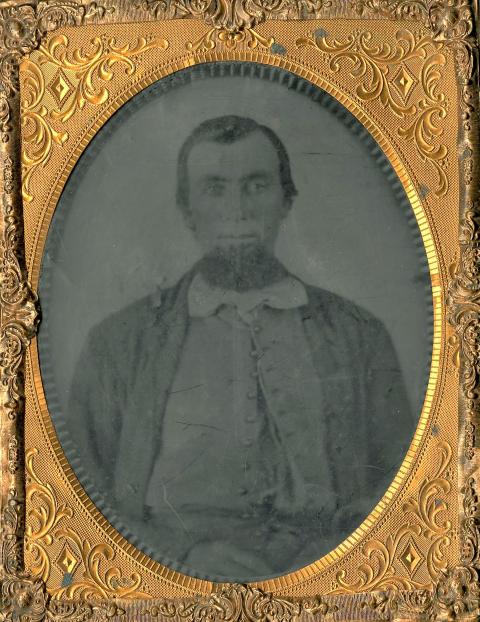
Plumb gave orders to retreat just as the reinforcements arrived from Companies A and F, at which time the Cheyenne wheeled about and took off, leading the troopers on another chase for a mile or two. Pvt. William Bonwell of the 11th Kansas and Pvt. Tilman Stahlnecker of the 11th Ohio were killed. Plumb later wrote in his report that this was the first engagement of this sort for the men, and that it would be useful for them.
Many of the men of the 11th Kansas, including Plumb, had signed enlistments for three years or the duration of the war. The Civil War having ended in April, the men, many of them farmers, were anxious to get home to their families and start their spring planting. Fighting the Cheyenne and Lakota on the western plains was not what any of them had enlisted for. Plumb petitioned the governor of Kansas for relief, but his arguments fell on deaf ears.
Later that month, Plumb was ordered south to Fort Halleck near Elk Mountain to protect the overland mail route. Camp Dodge was abandoned; Plumb brought companies A, B, F, L, and M with him, leaving the remainder to garrison Platte Bridge Station and the small stations along the telegraph route. Meanwhile, the attacks against the telegraph stations continued.
In June, between 1,500 and 2,000 Lakota prisoners and their families were en route east to Fort Kearney, under the guard of 135 7th Iowa cavalrymen. A skirmish in western Nebraska Territory ended with the deaths of five soldiers and about 30 Lakota, but the Lakota all escaped and headed north.
From Fort Laramie, Moonlight gave chase. But his expedition of 250 troopers resulted in a stampede of their horses by a band of 200 Lakota, 120 miles northeast of Fort Laramie. Half the men had to walk back to the fort. Moonlight was accused of being drunk during the fiasco, and was immediately relieved of command by Gen. Patrick Connor.
All this trouble ultimately culminated in the Battle of Platte Bridge and the Battle of Red Buttes on July 26, 1865, when in which Lt. Caspar Collins of the 11th Ohio and 27 other soldiers--most of them from the 11th Kansas--were killed. A recent discovery by the author shows that Undercook Harvey Craven was wounded in the Battle of Platte Bridge, providing evidence that the Black soldiers of the 11th Kansas were involved in combat. Undercook Craven also took part in two other skirmishes in his service in the West.
Return to Kansas
The regiment began the process of mustering out on August 13, 1865. Their journey home was arduous, as many of the men were without horses after Moonlight’s disastrous expedition, and many of the horses in any case had to be left at Fort Laramie. It took about a month. They reached Kansas in mid-September, and were discharged.
For the men of the 11th Kansas Volunteer Cavalry, what began as fighting to save their territory and ensure that it enter the Union as a free state turned into fighting a bloody Civil War. They fought in pitched battles against large Confederate armies, waged guerrilla warfare against bushwhackers, survived ambush by Native Americans, and survived the harsh weather and terrain.
On September 29, 1865, Preston Plumb wrote his final diary entry. He summed up how the men of his regiment must have felt, given all they had been through. He simply wrote, “Home from the wars forever.”
[Editors' note: Special thanks to the Wyoming Cultural Trust Fund for support which in part made publication of this article possible.]
Resources
Primary
- Bodwell, Sherman. “October 1, 1863” Bodwell Diary. 1862-1865.
- 11th Kansas Descriptive Roll, Company K. Microfilm, Fort Caspar Museum.
- Plumb, Preston B. “September 29, 1865” 1865 Plumb Diary. 1865.
Secondary
- McDermott, John D. Frontier Crossroads: The History of Fort Caspar and the Upper Platte Crossing. Casper, Wyoming: City of Casper, Wyoming, 1967, pp. 39-59.
- Wickman, Johanna D. The Forgotten Senator: The Life and Character of Preston B. Plumb. Casper, Wyoming: Bellis Perennis Publishing, 2023.
- Wickman, Johanna D. Lost Forts of Casper. Charleston, South Carolina: The History Press, 2016.
Illustrations
- The photos of Thomas Ewing, Edmund Ross and William Bonwell are from the collections of Rob and Lesa Reeves, courtesy of them and the author.
- The photo of Thomas Moonlight was made by the Matthew Brady studio, and is in the Library of Congress. Used with thanks.
- The photo of Lt. Col. Preston Plumb, taken in Paola, Kansas, in January 1865 shortly before he left Kansas for the West, is from the Mollus-Mass Collection, U.S. Army Heritage and Education Center, Carlisle, PA
- Famed illustrator N.C. Wyeth painted the mural of the Battle of Westport in the Missouri Capitol in Jefferson City, Missouri, in 1920. Thanks to Clio.com for this image. See more here on Wyeth’s other Civil War paintings in the Missouri Capitol. https://maa.missouri.edu/education/museum-in-30-objects/battle-westport-october-23-1864.
- William Esley Connelly’s map of Wyoming locations relevant to the 11th Kansas Regiment and Andy Robbins’s sketch of Camp Dodge are from the author’s collections. Used with permission and thanks.

